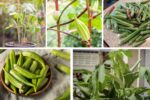There’s something extra special about filling your home with fresh flowers you’ve grown yourself. A garden designed specifically for cut flower arrangements not only beautifies your outdoor space but also lets you bring nature’s beauty indoors throughout the year. Whether you dream of lush, romantic bouquets or bright, cheerful table centerpieces, planting a cut flower garden is easier than you might think.
If you’re ready to start snipping blooms for your vases, here are 10 expert tips to plant flowers perfect for cut arrangements — so your home can bloom inside and out.
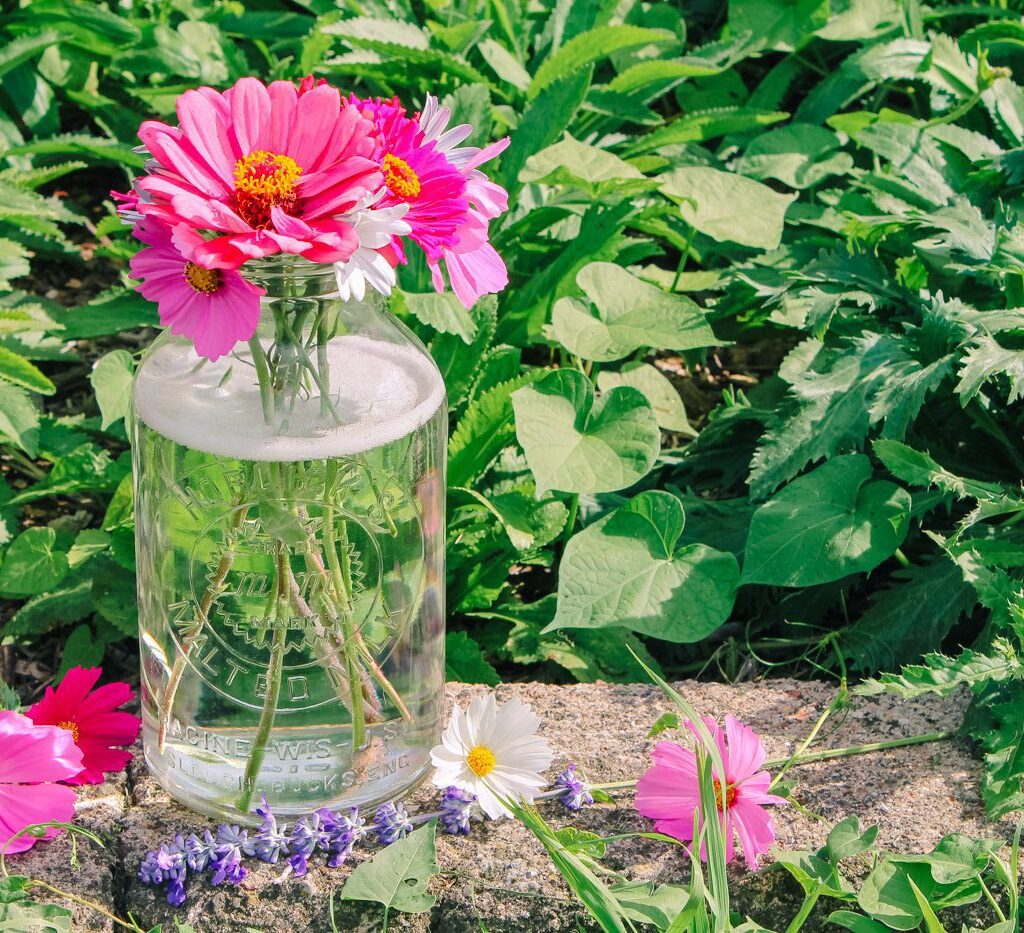
1. Choose the Right Flowers for Cutting
The key to a successful cut flower garden lies in selecting varieties that hold up well in a vase. Not every beautiful bloom makes a good cut flower, so focus on those known for their strong stems, long vase life, and continuous blooming.
Top picks for cut flowers:
- Zinnias: Colorful, hardy, and long-lasting.
- Sunflowers: Tall and cheerful with sturdy stems.
- Dahlias: Abundant shapes and colors perfect for bold bouquets.
- Snapdragons: Vertical interest and multiple blooms per stem.
- Cosmos: Delicate and airy, adding softness to arrangements.
- Peonies: Classic and fragrant with lush, romantic blooms.
- Roses: A timeless cut flower choice.
- Lisianthus: Elegant, rose-like blooms with excellent longevity.
Tip: Mix annuals for quick color and perennials for recurring blooms every season.
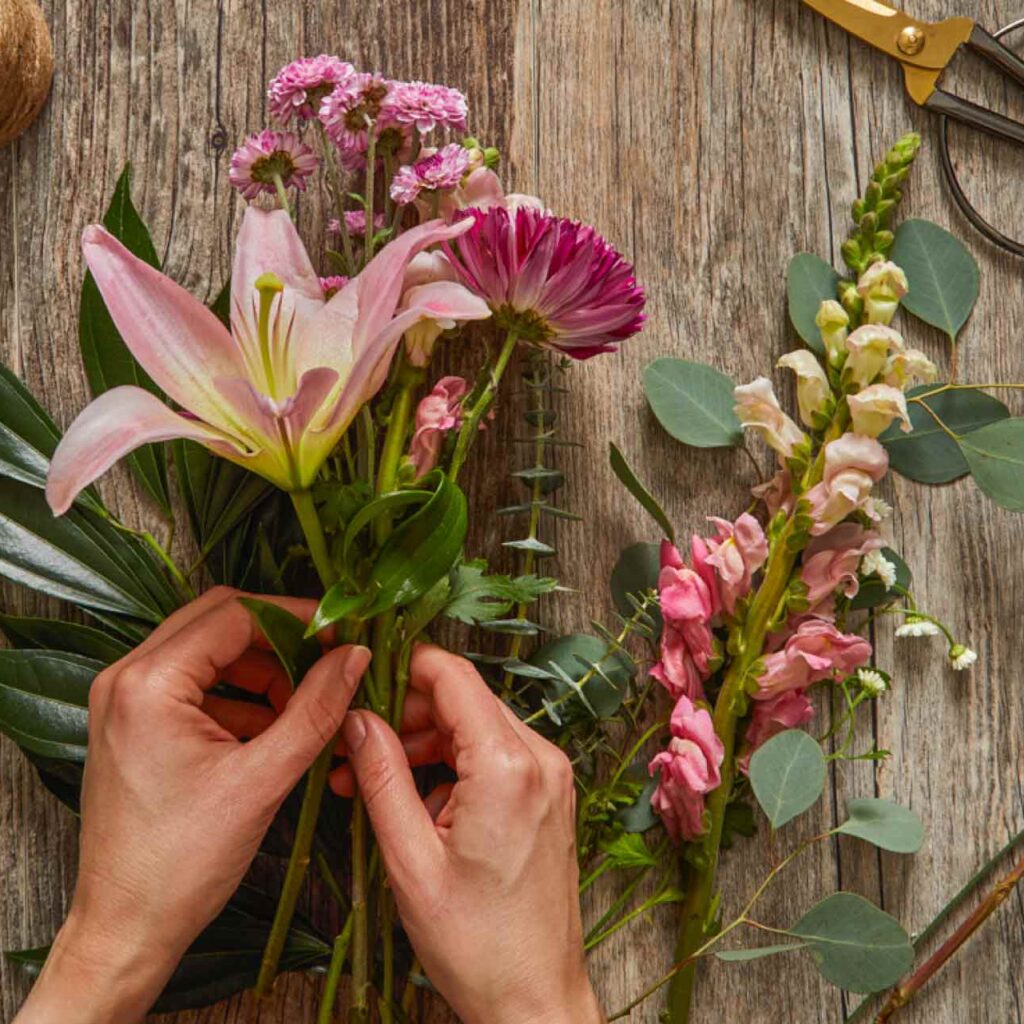
2. Plant with Succession Blooming in Mind
If you want a steady supply of fresh flowers for your vases, stagger planting times and select varieties with different bloom periods.
How to plan for continuous blooms:
- Choose early, mid, and late-season bloomers.
- Sow fast-growing annuals like zinnias, cosmos, and sunflowers every 2-3 weeks for extended color.
- Include perennials like coneflowers and black-eyed Susans to anchor your cutting garden with reliable blooms.
Tip: Keep a planting calendar or journal to track sowing and blooming dates for easy planning next year.
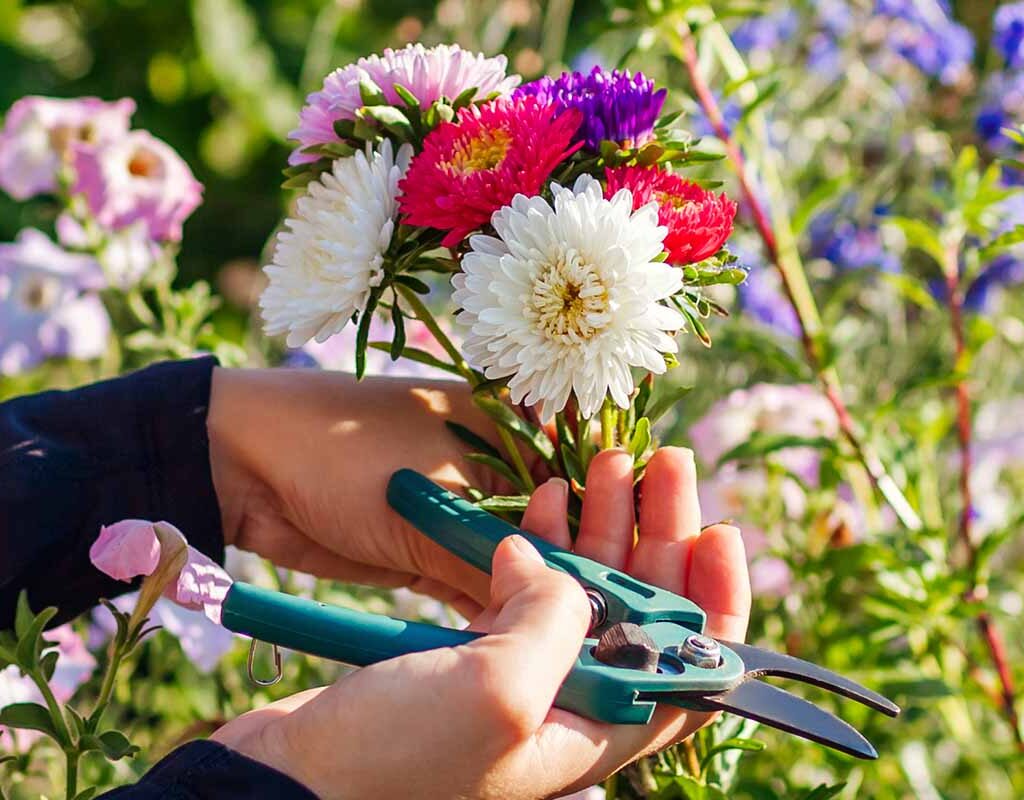
3. Pick a Sunny, Open Location
Most flowers grown for cutting thrive in full sun, requiring at least 6-8 hours of direct sunlight daily.
Ideal site conditions:
- Well-drained soil to prevent root rot.
- Away from tall trees or structures that cast shade.
- Easy access for watering, weeding, and harvesting.
- Room for tall flowers to grow without blocking smaller ones.
Tip: If you’re limited on space, dedicate a sunny raised bed or even large containers for cut flowers.
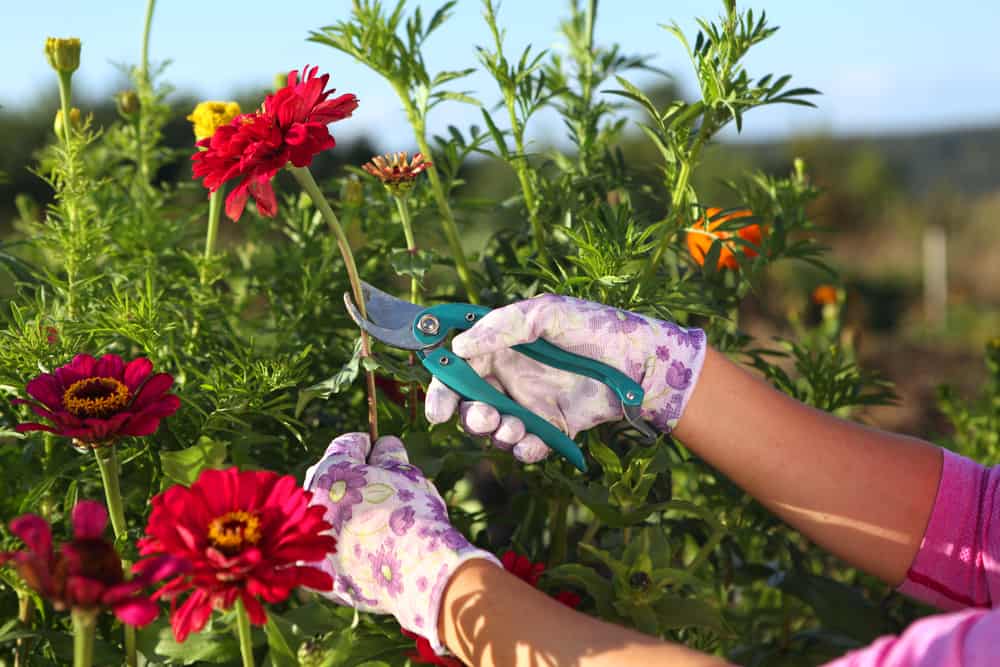
4. Prepare Rich, Fertile Soil
Healthy soil is the foundation for vibrant, long-lasting blooms. Cut flowers perform best in soil that’s loose, fertile, and rich in organic matter.
Soil preparation steps:
- Test soil pH (most flowers prefer a pH between 6.0 and 7.0).
- Mix in compost, aged manure, or organic matter before planting.
- Use a balanced slow-release fertilizer at planting time.
- Mulch with organic materials like straw or shredded leaves to retain moisture and suppress weeds.

5. Grow Flowers with Long, Strong Stems
Cut arrangements need sturdy, straight stems that hold up well in vases. Some flowers naturally produce tall stems, while others benefit from specific growing techniques.
Ways to encourage long stems:
- Plant flowers close together to encourage upward growth.
- Remove side buds (disbudding) on certain flowers like dahlias to direct energy to a central bloom.
- Stake tall plants like delphiniums and gladiolus to prevent bending.
Tip: Regularly harvesting blooms encourages many flowers to produce longer stems and repeat flowers.
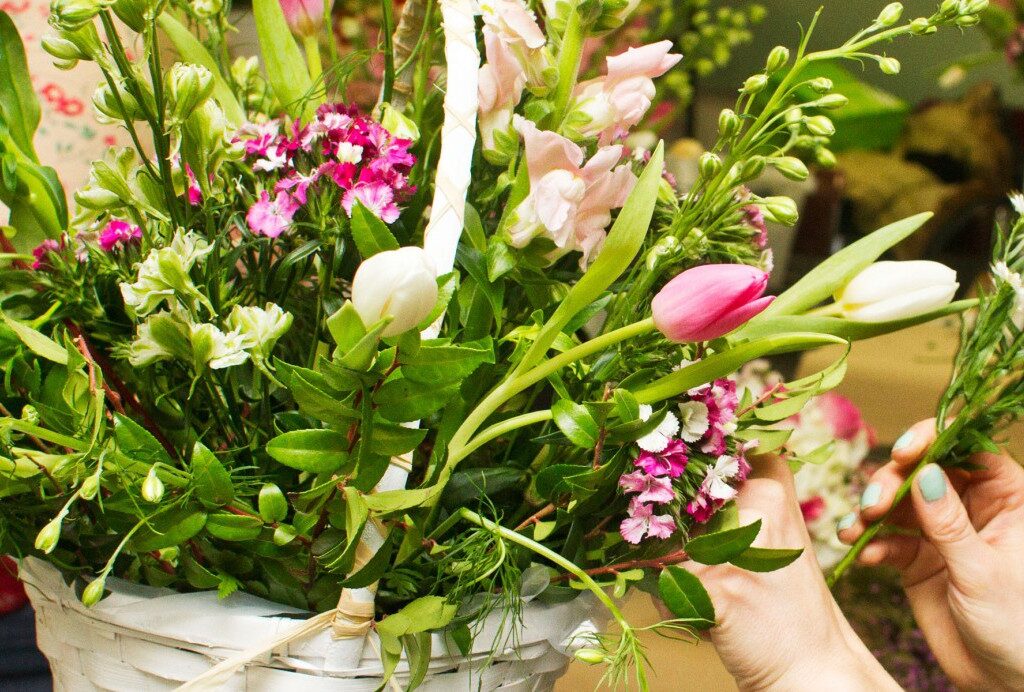
6. Water Deeply and Consistently
Flowers intended for cutting need consistent moisture to prevent stress, which can affect bloom quality and vase life.
Watering guidelines:
- Water deeply rather than frequently — about 1 inch of water per week, more in hot, dry weather.
- Water early in the morning to allow foliage to dry, preventing fungal diseases.
- Avoid wetting leaves and blooms directly.
Tip: Use drip irrigation or soaker hoses for efficient, even watering.
7. Deadhead Regularly to Prolong Blooms
Removing spent blooms, known as deadheading, encourages plants to produce new flowers instead of going to seed. This keeps your garden blooming longer and ensures a steady supply for arrangements.
How to deadhead:
- Use sharp, clean garden scissors or snips.
- Remove faded flowers and cut stems back to a healthy set of leaves.
- Harvest flowers frequently to double as deadheading.
8. Cut Flowers at the Right Time
When it comes to creating beautiful arrangements, timing matters. Harvesting at the right stage ensures the flowers last longer once indoors.
Best times to cut:
- Early morning, when flowers are fully hydrated.
- Select flowers just before they fully open — buds should be showing color and slightly unfurling.
- For flowers like sunflowers, cut when petals just begin to open.
Tip: Immediately place cut stems in a bucket of lukewarm water in the shade to maintain freshness.
9. Use Clean, Sharp Tools and Buckets
Disease and bacteria can quickly shorten the life of cut flowers. Keeping your tools and containers clean prevents contamination.
Good hygiene practices:
- Clean scissors or garden snips with rubbing alcohol before and after use.
- Use sterilized buckets or vases for harvested blooms.
- Change water daily in vases and recut stems underwater to extend vase life.
10. Mix Colors, Shapes, and Textures
A stunning flower arrangement combines a variety of blooms with different colors, forms, and textures. When planning your cutting garden, include focal flowers, fillers, and foliage plants.
Arrangement building blocks:
- Focal flowers: Large, eye-catching blooms like dahlias, roses, or sunflowers.
- Secondary flowers: Medium-sized blooms like snapdragons or cosmos.
- Filler flowers: Airy blooms like baby’s breath, yarrow, or ammi.
- Foliage: Greens like dusty miller, eucalyptus, or ferns for contrast.
Tip: Plan your garden layout so flowers with complementary colors and bloom times grow together, making it easier to create harmonious bouquets.
Final Thoughts
A dedicated cut flower garden is a source of endless joy — one that lets you fill your home with fresh, fragrant, and homegrown arrangements all season long. By selecting the right plants, tending to their needs, and harvesting thoughtfully, you’ll enjoy an abundance of blooms perfect for vases, gifts, and special occasions.
Ready to start your cutting garden? Begin with a few easy, reliable favorites like zinnias, cosmos, and sunflowers, and expand from there. With these 10 expert tips, you’ll be well on your way to creating beautiful, garden-fresh flower arrangements any time you like.


